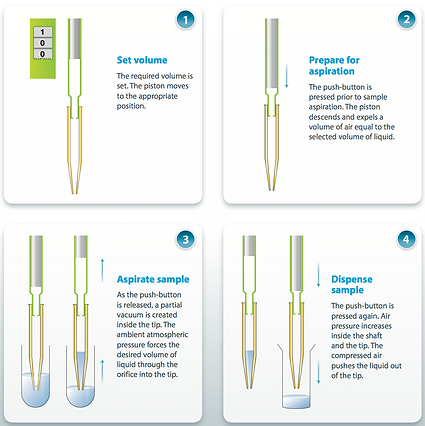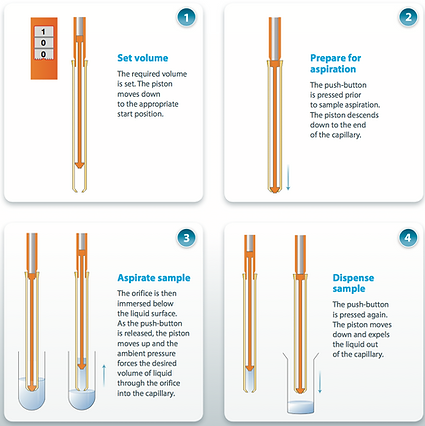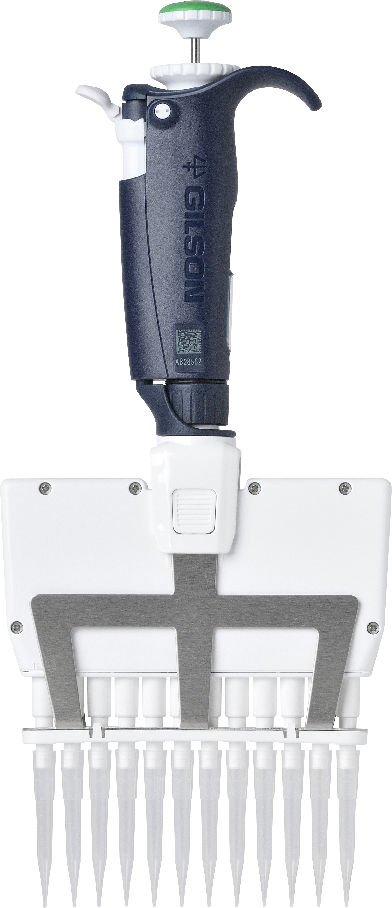
Daugiau nei prieš vieną amžių Louis Pasteur išrado stiklinę Pasteur pipetę, kuri stipriai sumažino užterštumą tarp pavyzdžių. Pasteur pipetė yra naudojama iki šių dienų.
1972 metais Daktaras Warrenas Gilsonas išrado pirmą reguliuojamo tūrio pipetę. Gilsono pipetė ne tik turėjo pirmines savybes padedančias išvengti klaidų, bet ir įgavo skaitmeninį rodmenį tiksliai parodantį nustatytą tūrį. Šiandien tiksliosios Gilson pipetės yra pasaulinis tikslumo, precizijos ir patikimumo standartas.





When the push-button is pressed on an air-displacement pipette, the piston inside the instrument moves down to let air out. Air is displaced by the piston. The volume of air displaced is equivalent to the volume of liquid aspirated.
The schematic drawings show how the piston determines the volume of air displaced and subsequently the volume of sample aspirated.


Positive-displacement pipettes, such as MICROMAN, work like a syringe. There is no air cushion between the disposable piston and the sample. With no elastic air cushion to expand or contract, the aspiration force remains constant, unaffected by the physical properties of the sample.
This allows the positive-displacement operator to pipette very viscous or high density samples, such as glycerol and blood.


Nuo 0.2 µL iki 10 mL.

Daugiakanalė pipetė

Mechaninė stūmoklinė pipetė

Mechaninė stūmoklinė pipetė su skaitmeniniu indikatoriumi

Komfortiškesnė Classic modelio evoliucija

Daugiakanalė pipetė

Elektroninė, vienakanalė, reguliuojamo tūrio: 0.5 µL - 10 mL

Elektroninė daugiakanalė pipetė, tūris nuo 0.5 µL iki 1200 µL

Fiksuoto tūrio mechaninė pipetė

Tiksli ir nebrangi mechaninė stūmoklinė pipetė, tūris: 2 µL - 5000 µL